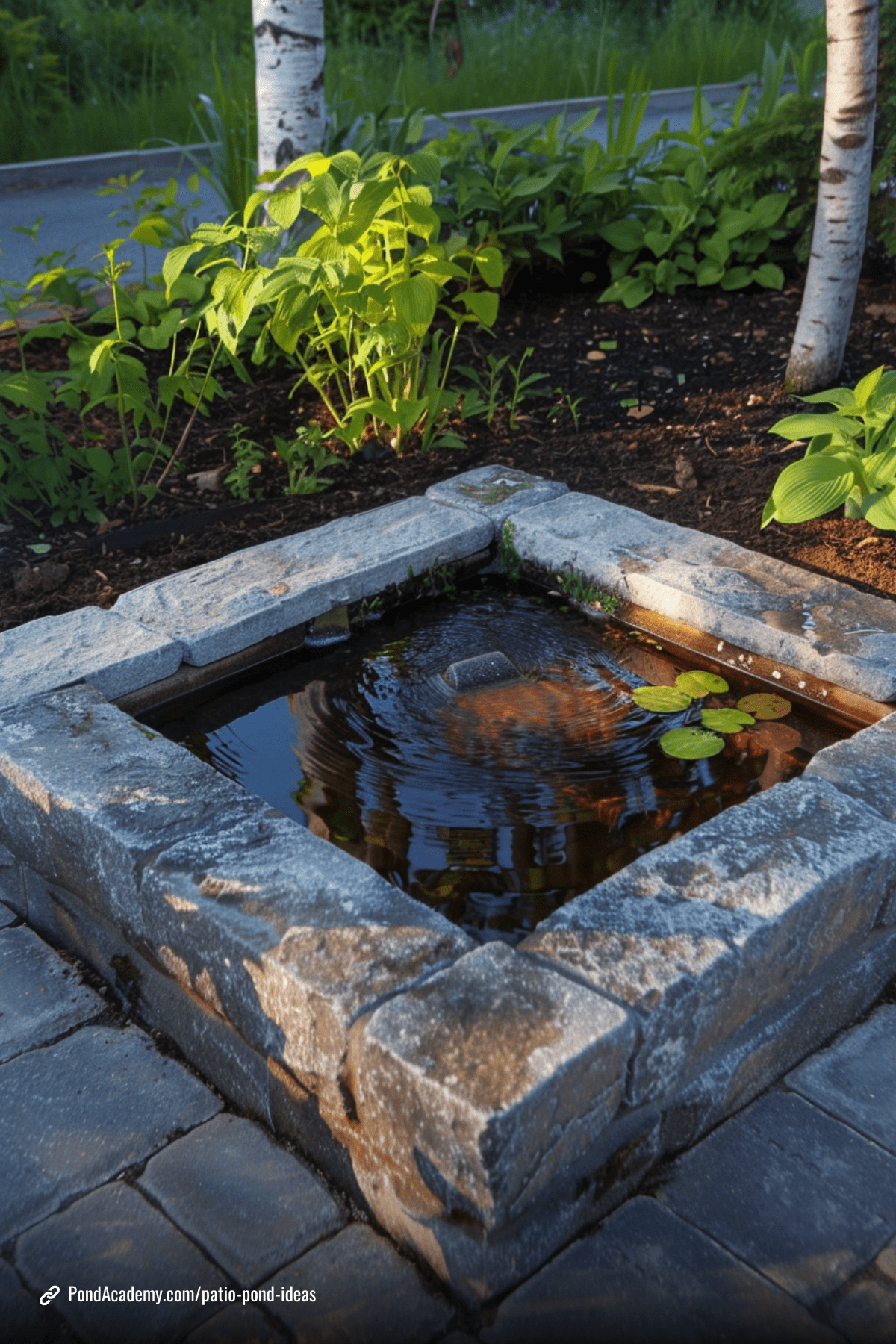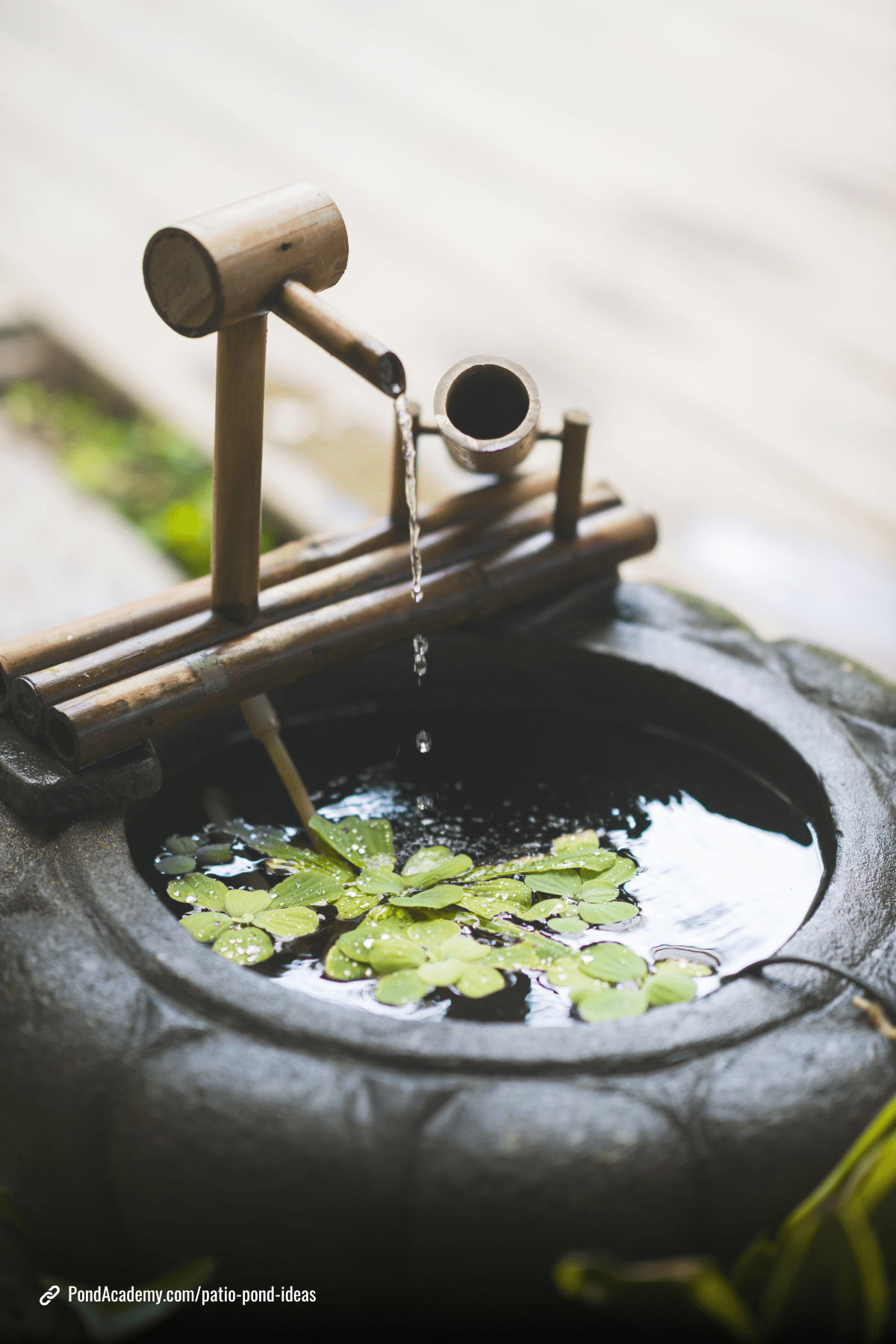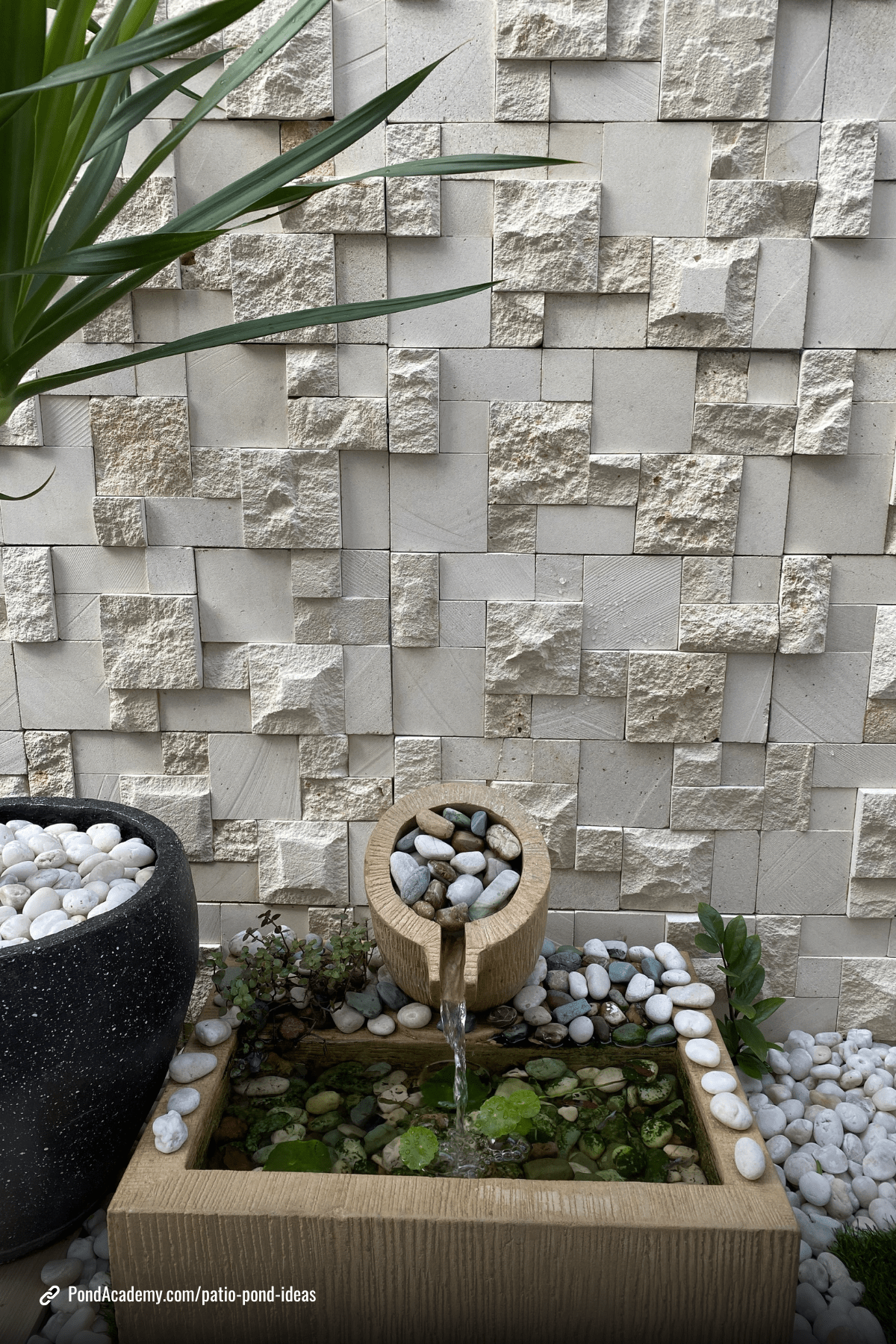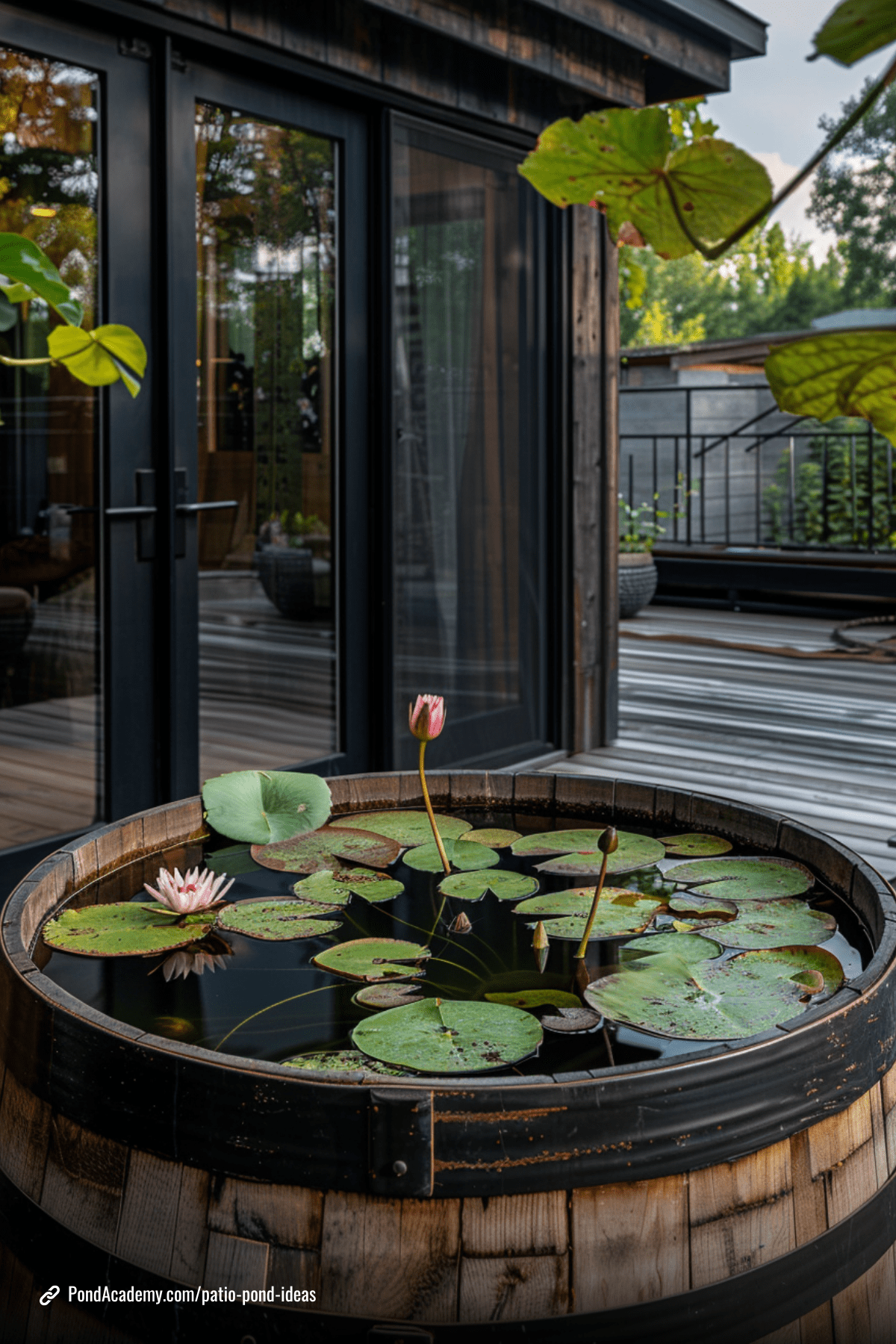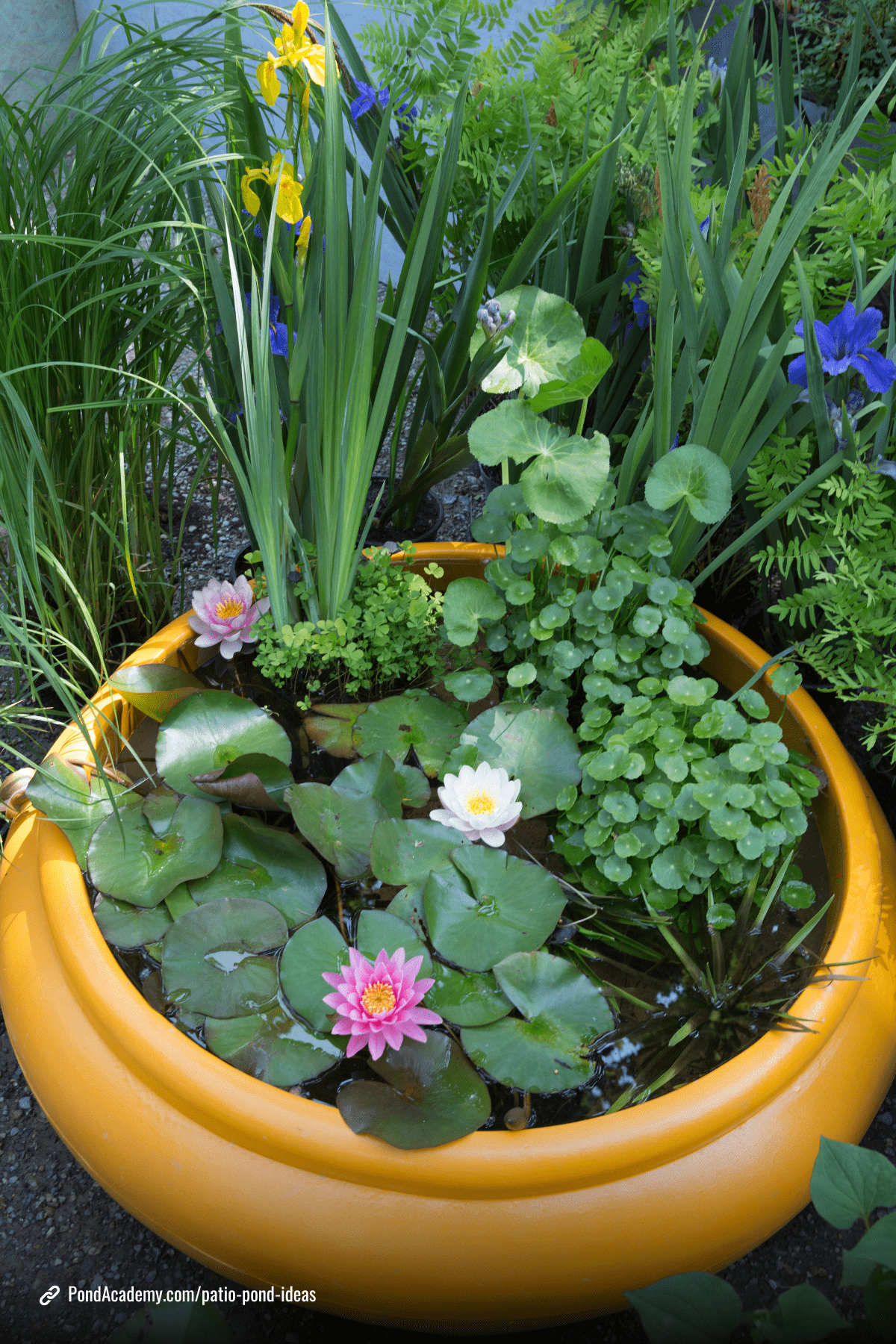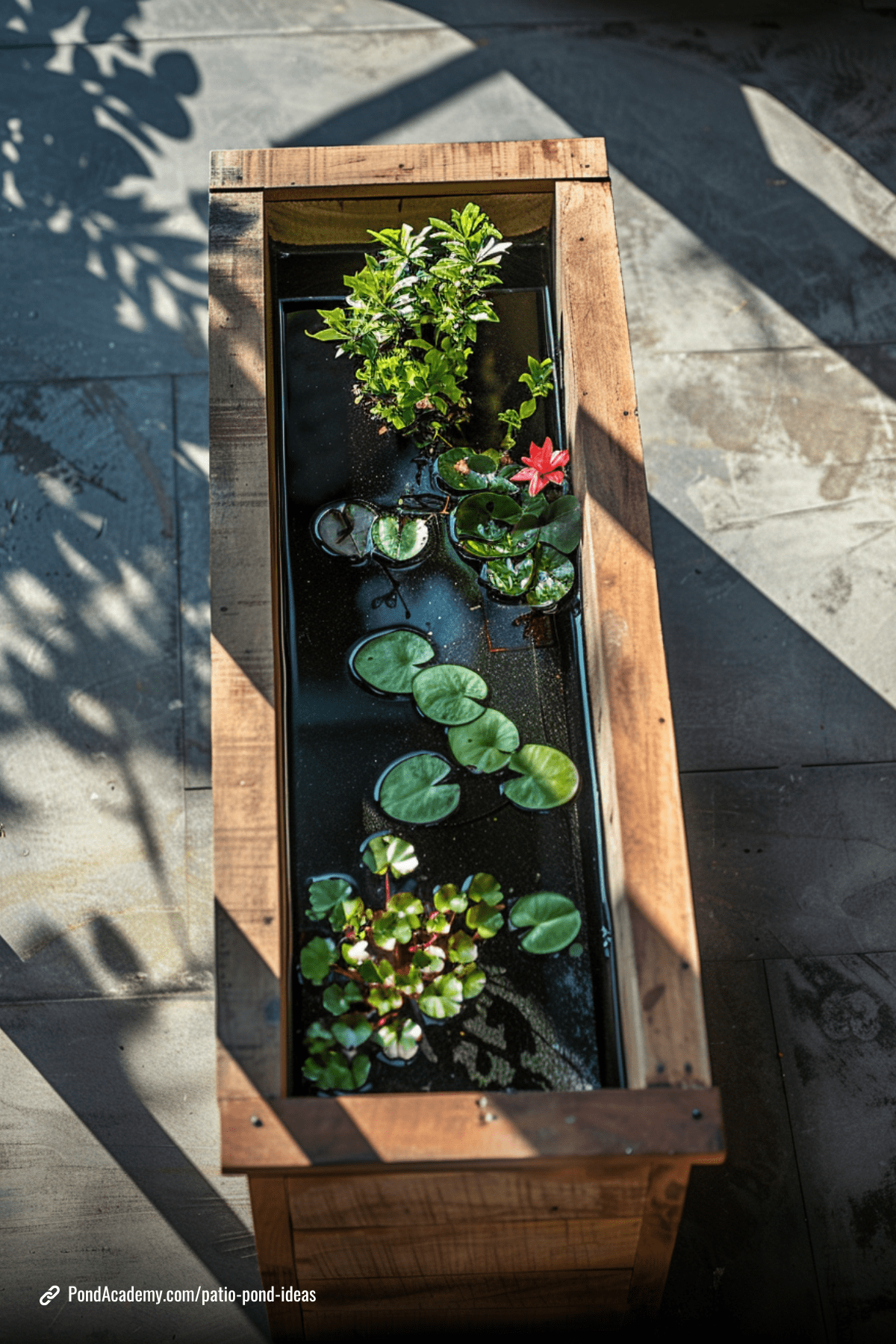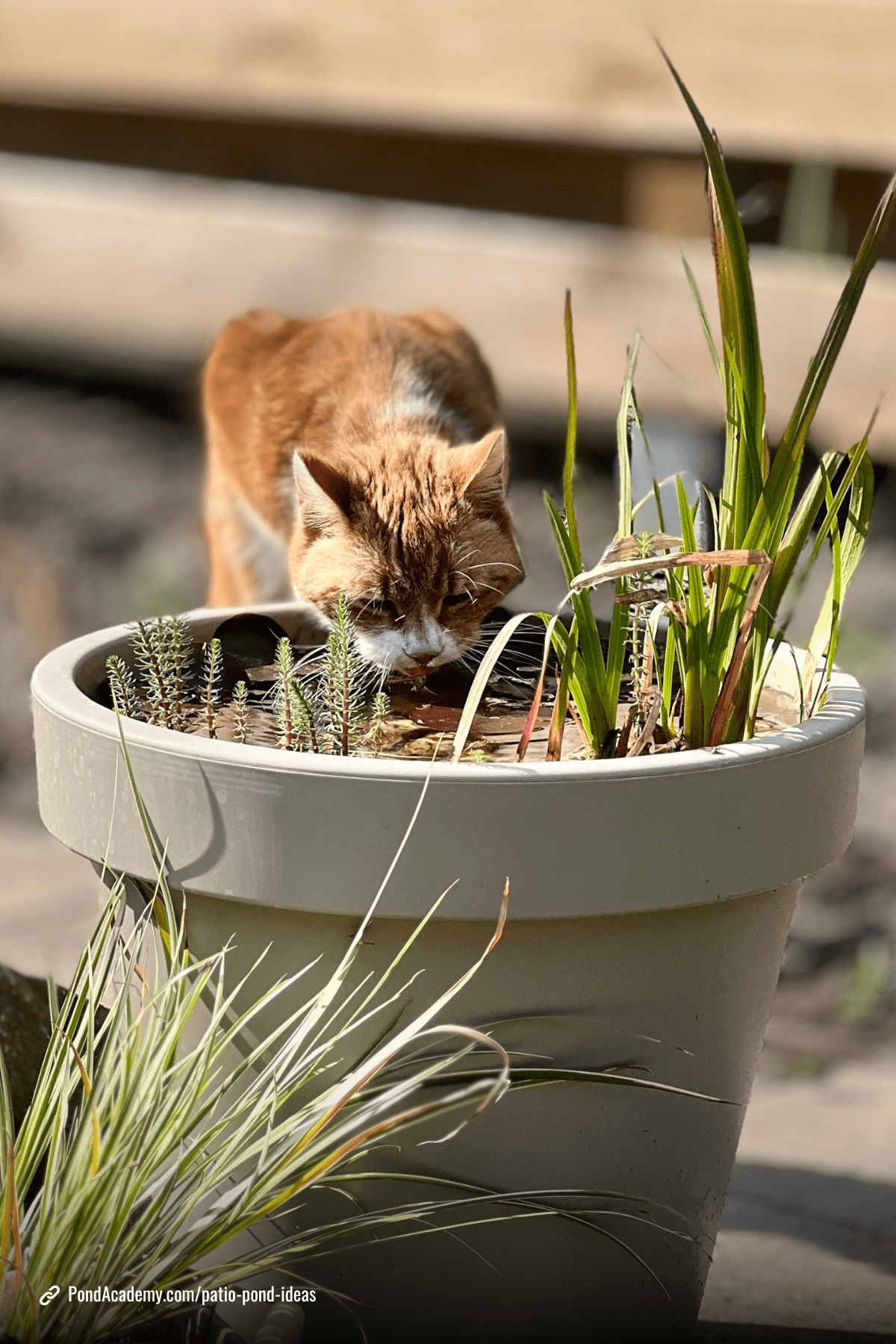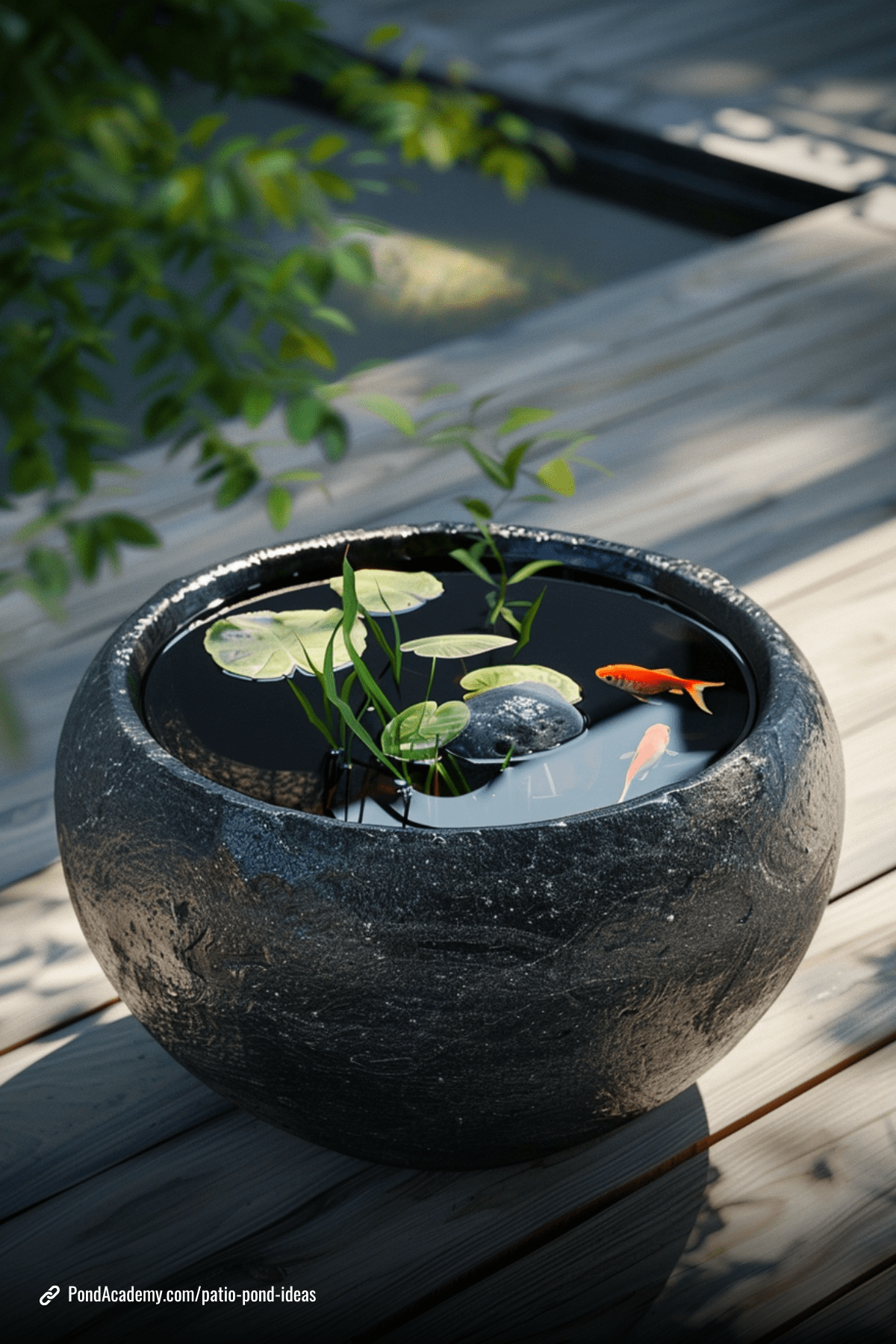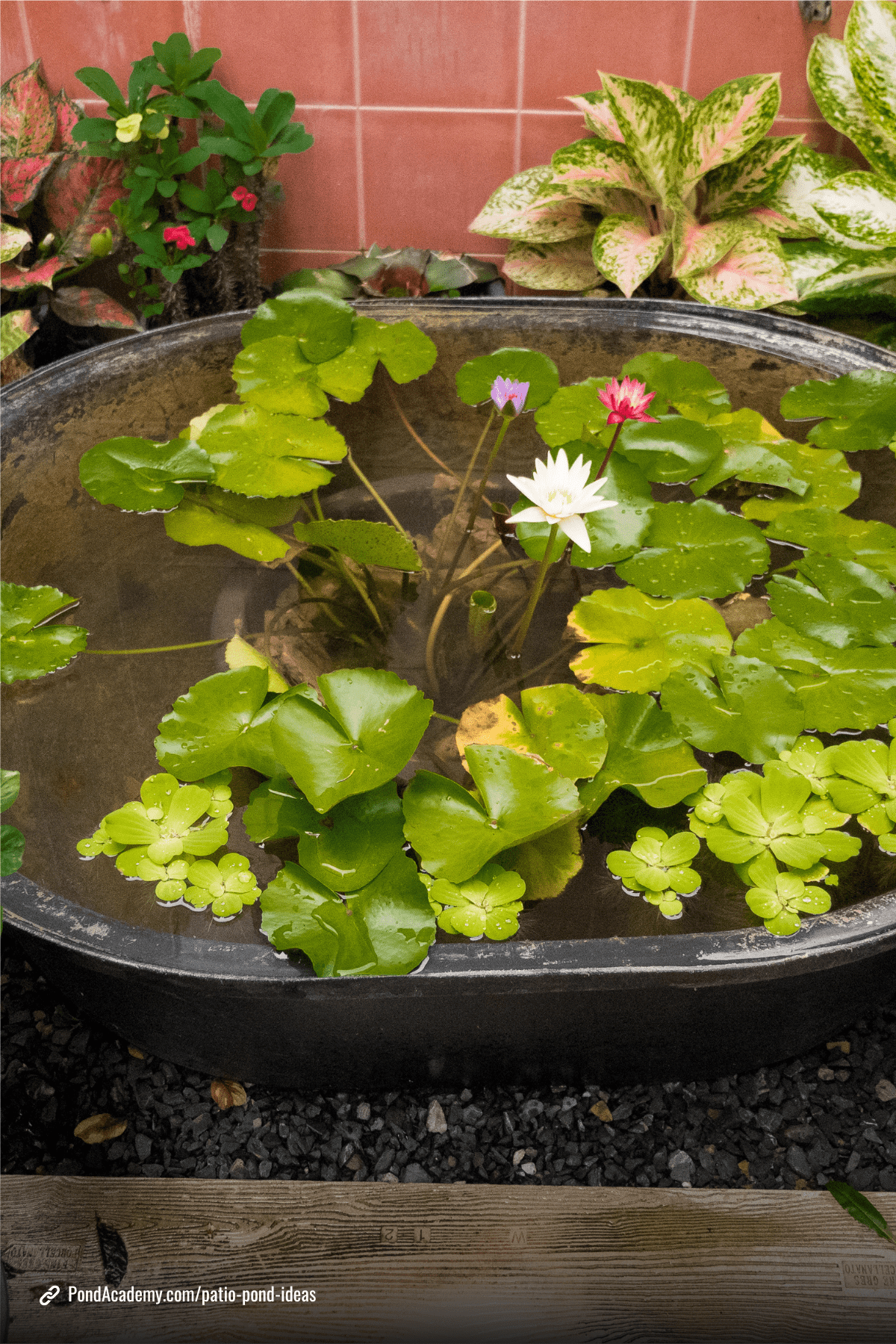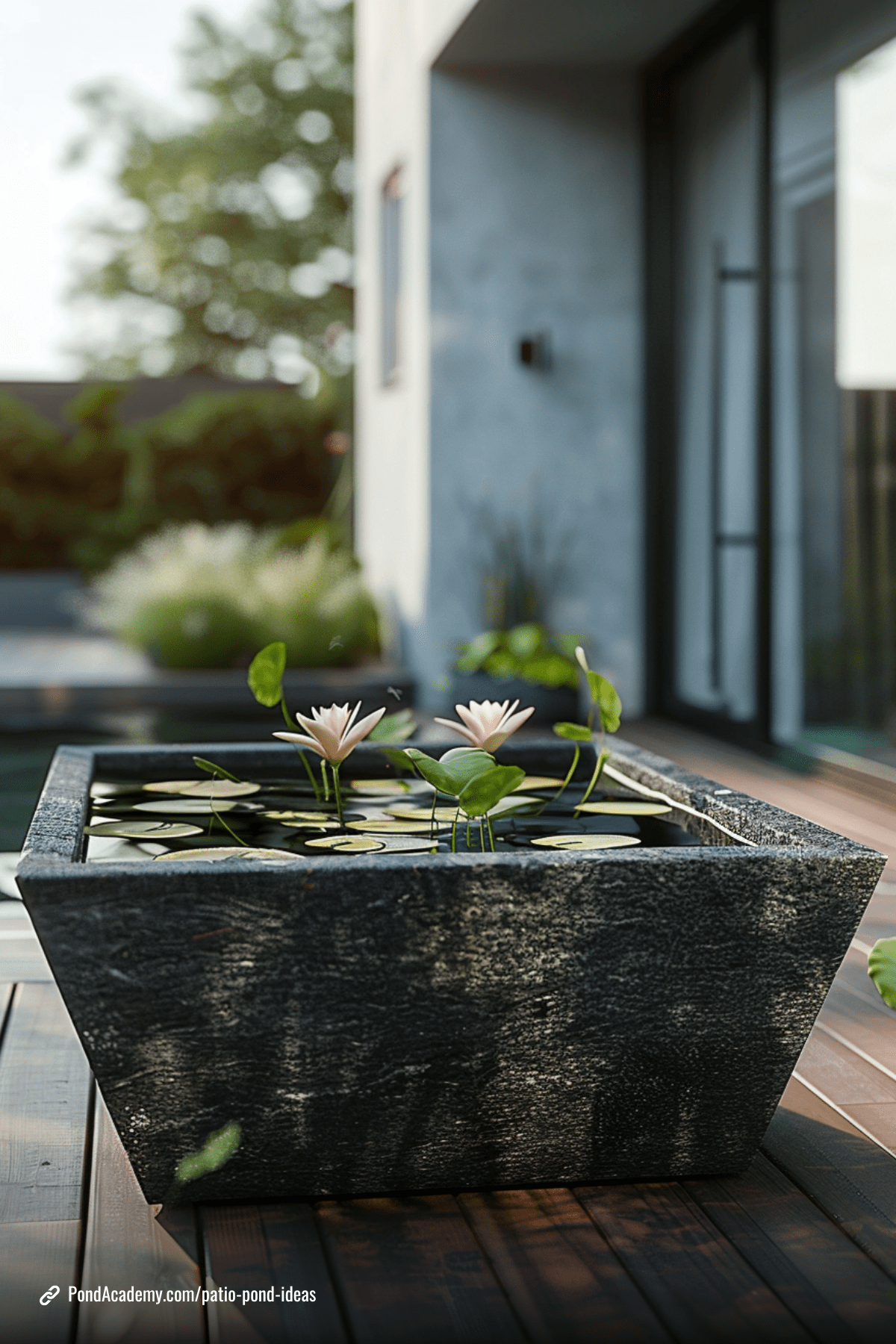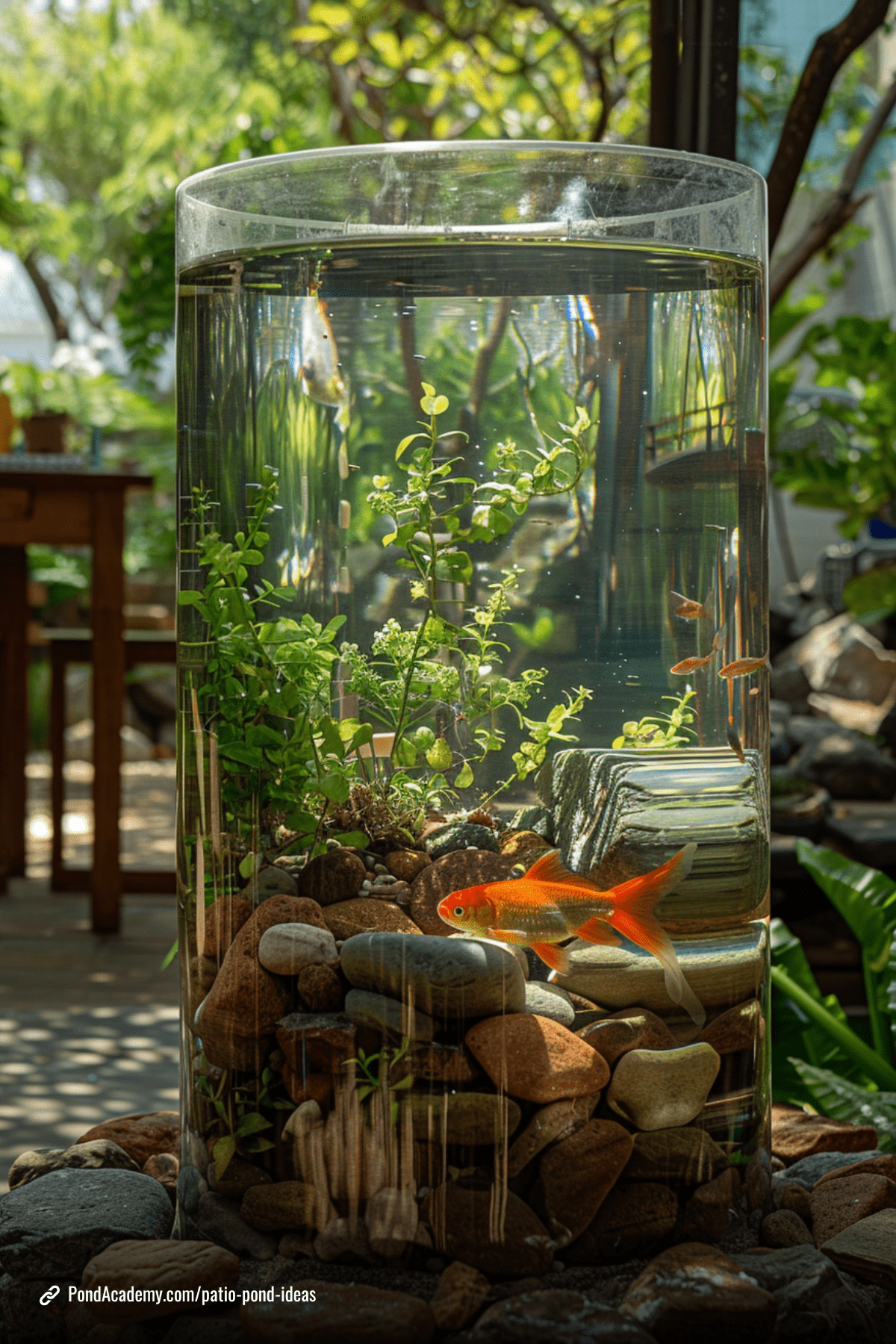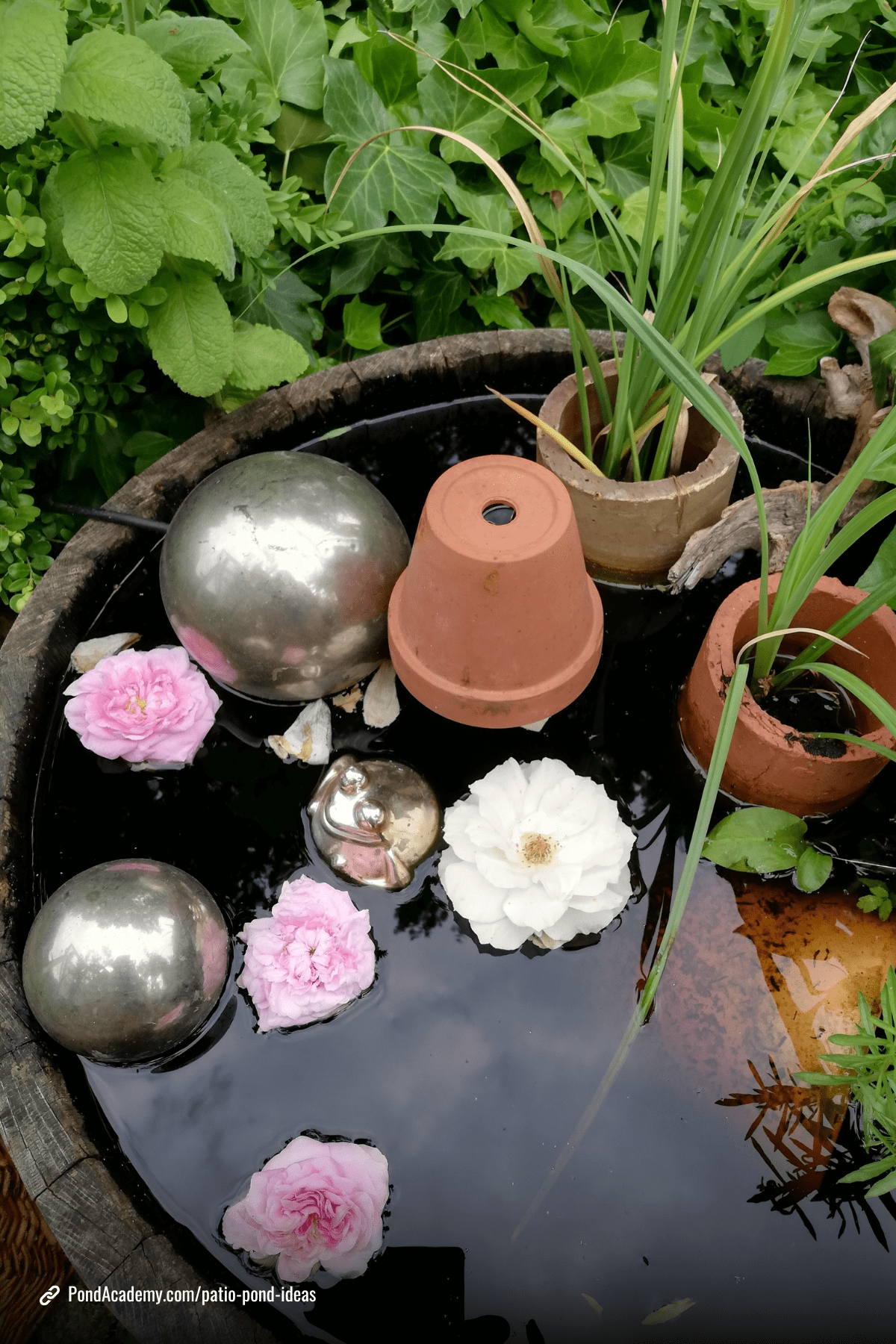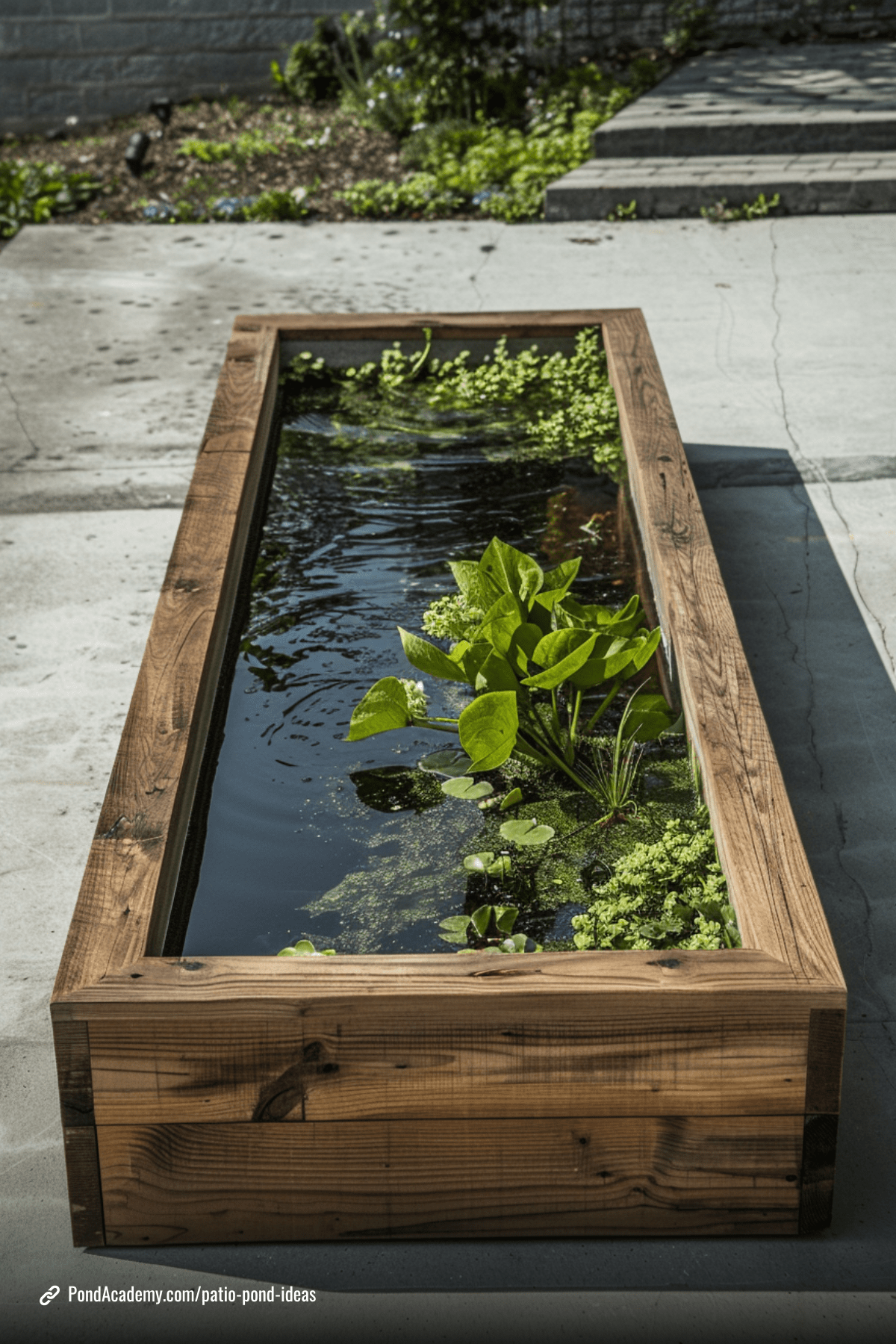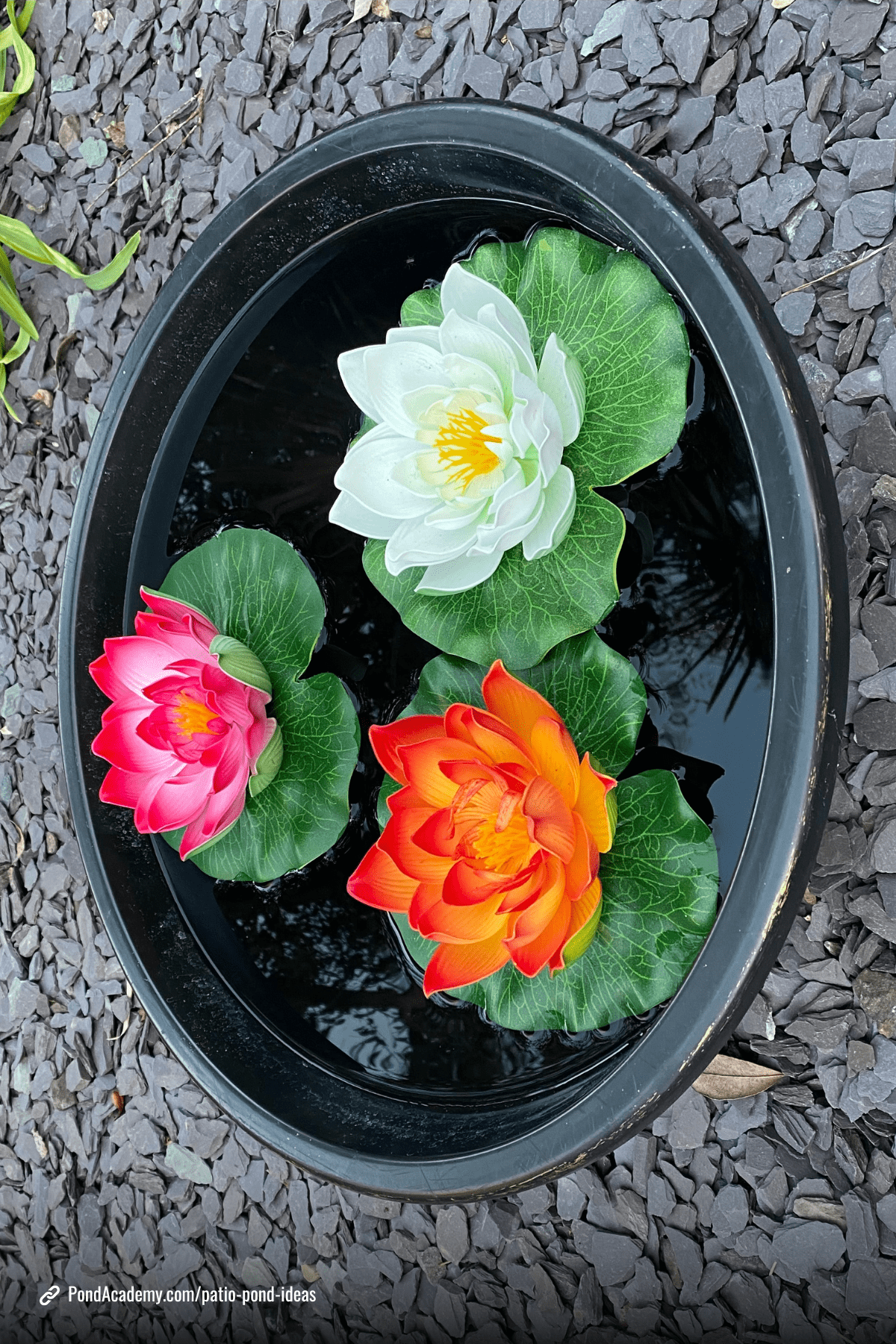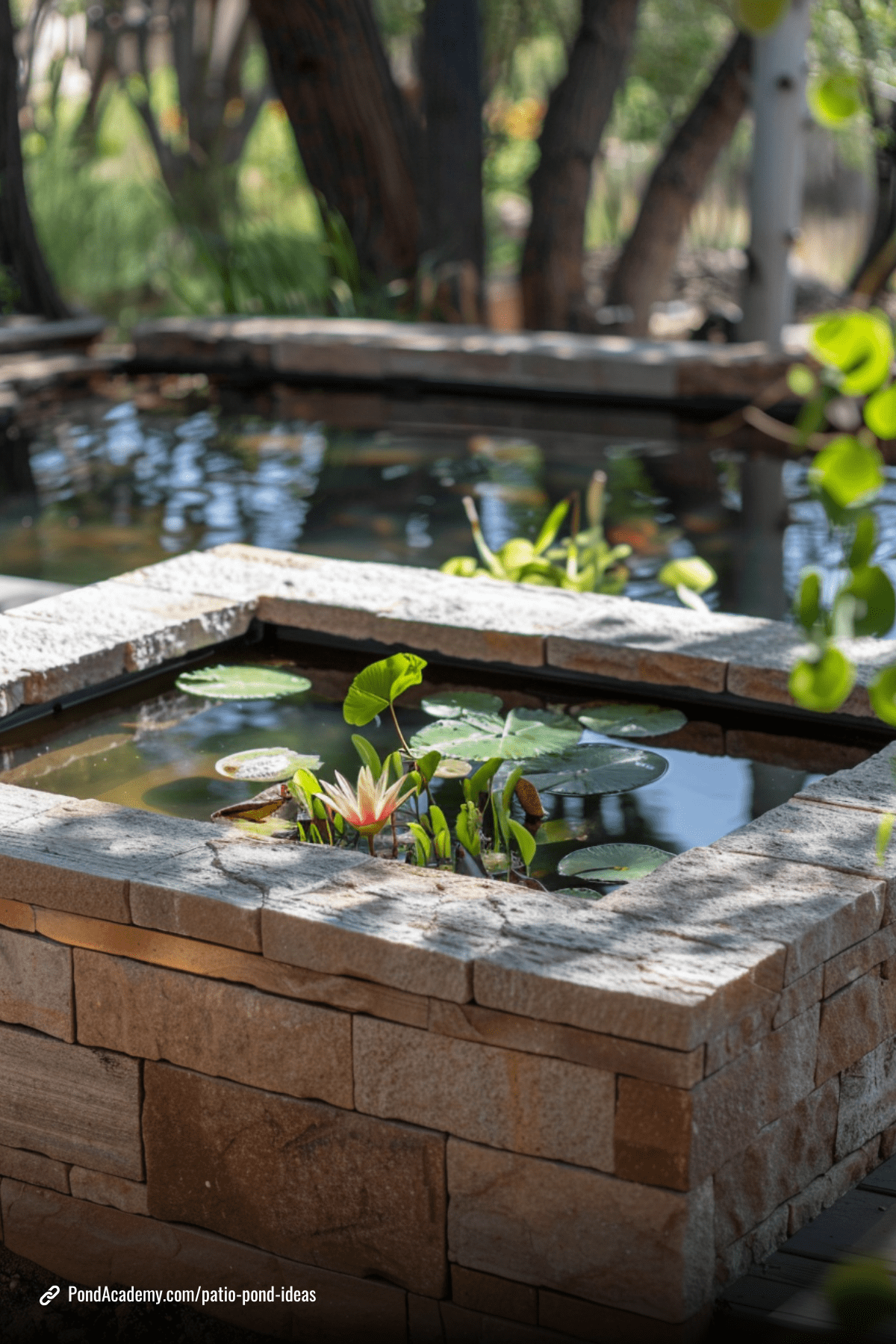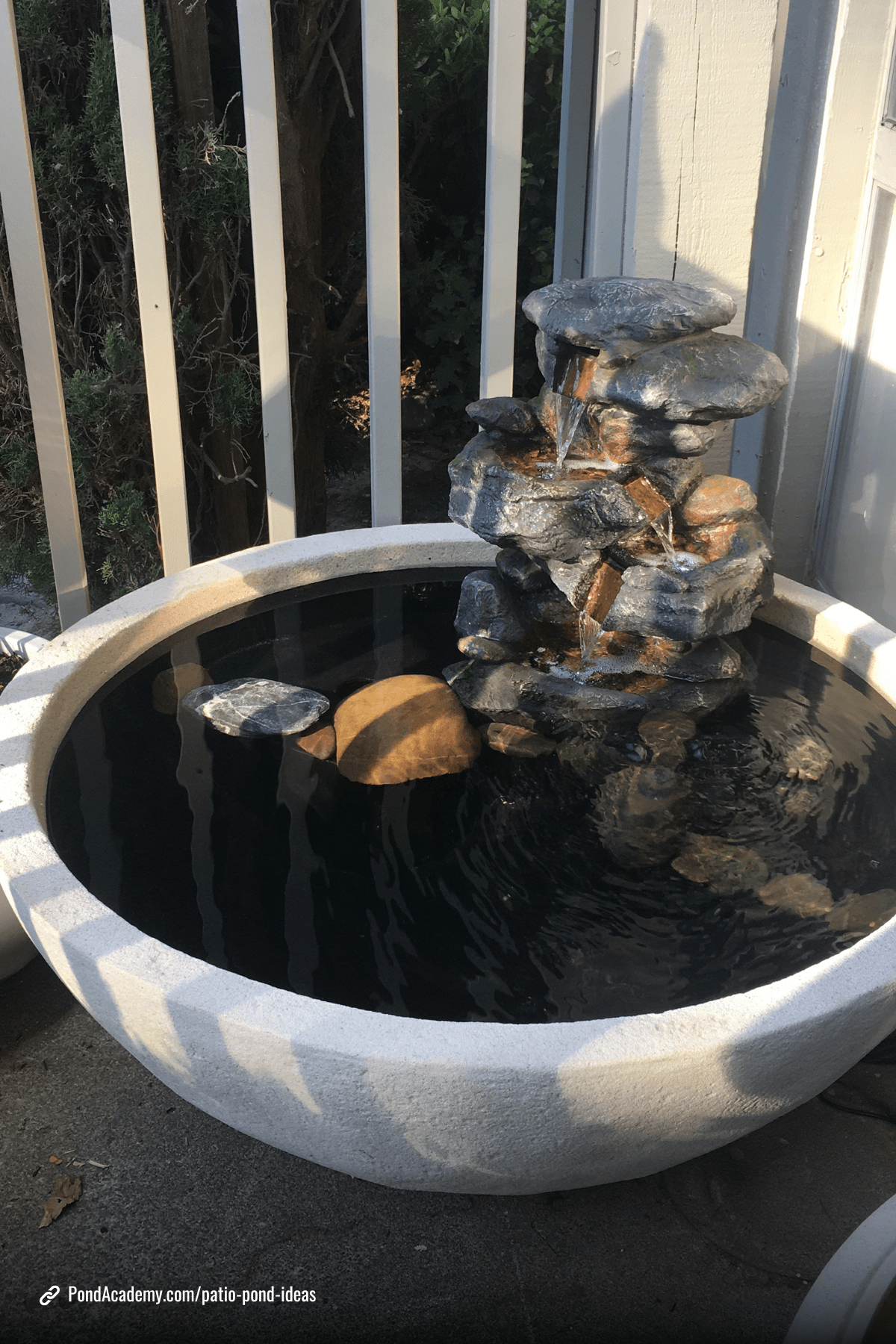16 Stunning Patio Pond Ideas Plus Tips to Create Your Own
Pond Academy is reader-supported. Buying through links on our site may earn us an affiliate commission. As an Amazon Associate I earn from qualifying purchases.
Patio ponds, also known as mini ponds or container ponds, are an easy way to breathe life into your outdoor space—with just a fraction of the maintenance of a traditional pond!
Below, I share 16 of my favorite patio pond ideas, along with practical tips for setting up your own.
Whether you have a small balcony or a spacious deck, these ideas are perfect for adding a touch of nature to any area.
Patio Pond Ideas
Tips for Creating Your own Patio Pond
Are you ready to add a mini container pond to your patio? Great choice! But before you run out to the store and buy the supplies, here are a few expert tips on creating and maintaining your patio pond.
1. Choose the Right Container
Select a suitable container that is watertight and fits your space. Popular options include large ceramic pots, whiskey barrels, or pre-formed plastic liners. Make sure the container is deep enough to accommodate aquatic plants and possibly fish, usually at least 12-18 inches deep.
I recommend considering a patio pond kit, which typically comes with everything you need to be up and running quickly. Amazon has several popular kits with various designs, features (like fountains, waterfalls, etc.), and price points, so you should be able to find one that matches your budget and style.
Local home improvement stores like Lowes or Home Depot typically have patio ponds for sale in their garden departments if you have one near you.
2. Prepare the Container
Add a layer of gravel or small stones at the bottom of the container. This helps with plant anchoring and provides some filtration. If you plan to add a pump or aerator, place it in the container now.
3. Select and Arrange Plants
Choose a variety of aquatic plants that are well-suited to your climate. Water lilies, lotus, and floating plants like water lettuce or water hyacinth are great options. Arrange taller plants towards the back and shorter ones in the front to create depth and visual interest. Aquatic plants help maintain water quality and provide shelter for fish.
4. Add Water and Condition It
Fill the container with water, preferably dechlorinated tap water. If using tap water, let it sit for 24-48 hours to allow chlorine to dissipate, or use a water conditioner.
5. Consider Adding Fish
If you want to add fish, select species that are suitable for small ponds, like goldfish or mosquito fish. Fish can help control insect larvae and add movement to your pond. Ensure your container has a small pump or aerator to keep the water oxygenated for the fish.
6. Placement and Sunlight
Place your patio pond in a location where it receives partial sunlight. Too much direct sunlight can lead to overheating and excessive algae growth, while too little can hinder plant growth.
7. Regular Maintenance
Check the water level regularly and top it up as needed, especially during hot weather when evaporation is high. Remove debris, fallen leaves, or dead plant material to keep the water clean. Perform partial water changes periodically to maintain water quality.
8. Monitor for Pests
Keep an eye out for pests like aphids or mosquito larvae. If you encounter pests, treat them promptly with safe methods, such as introducing natural predators or using non-toxic treatments.


